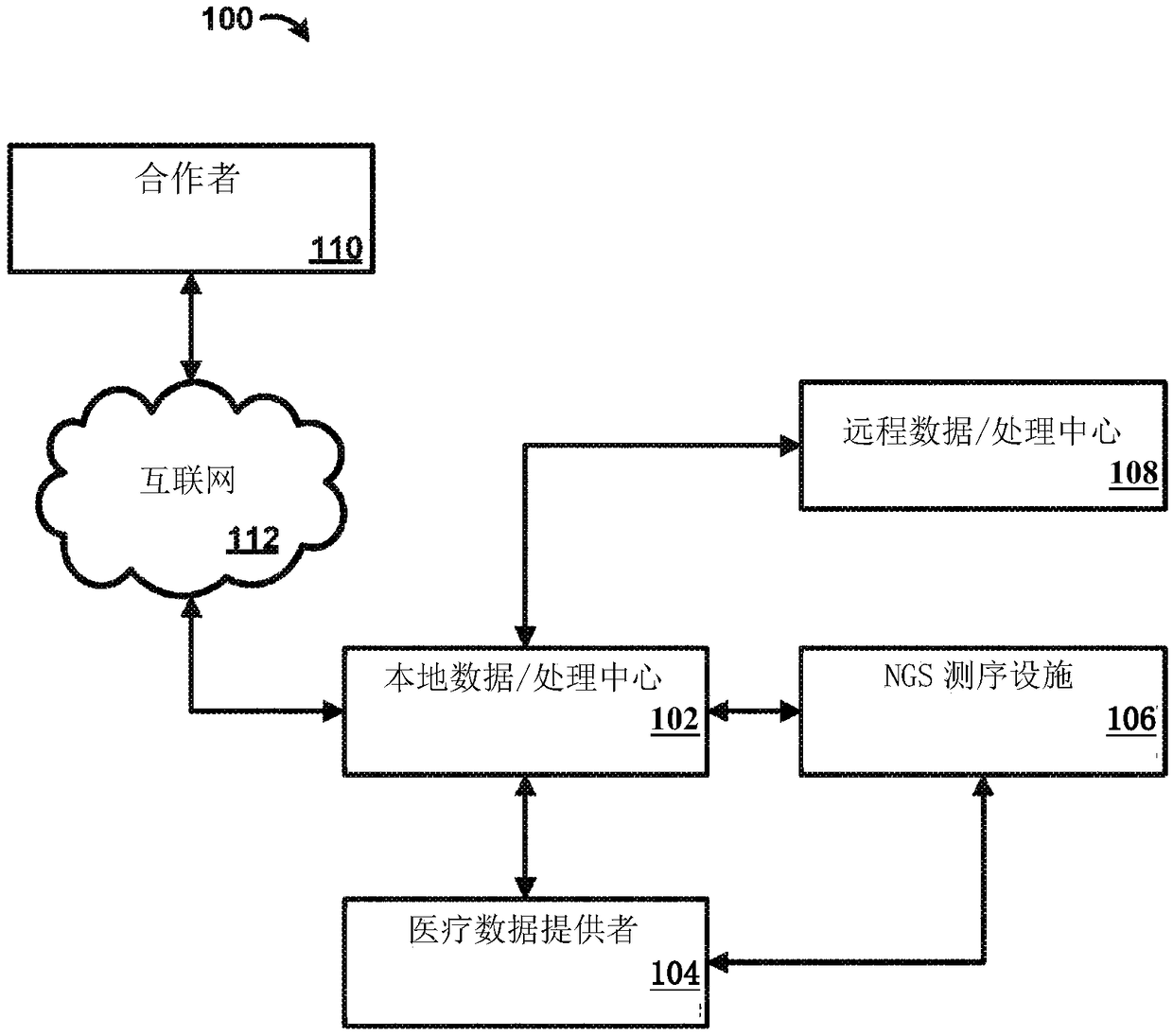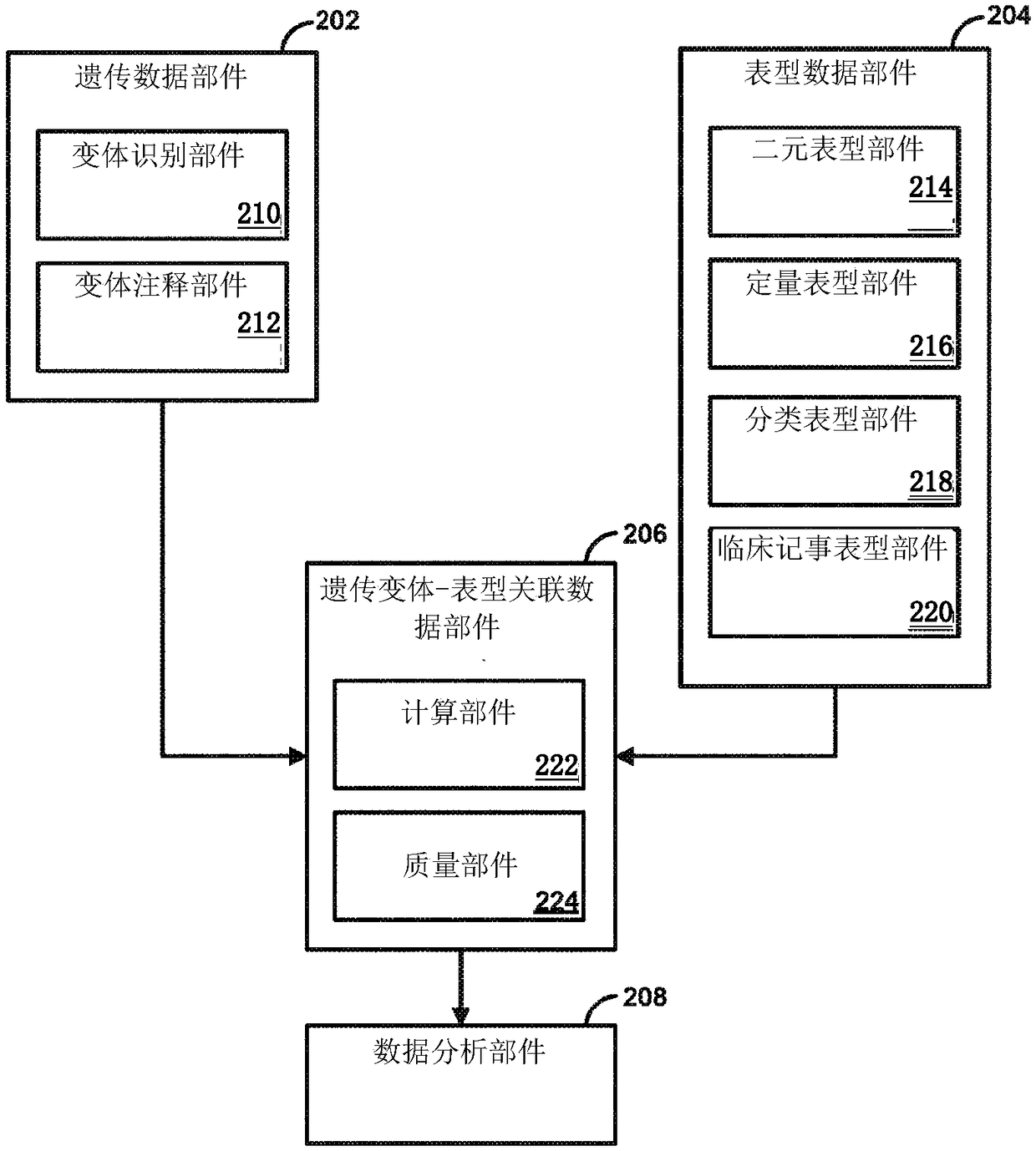Genetic variant-phenotype analysis system and methods of use
A variant, phenotype technique, applied in the genetic variant-phenotype analysis system and field of use
- Summary
- Abstract
- Description
- Claims
- Application Information
AI Technical Summary
Problems solved by technology
Method used
Image
Examples
Embodiment 1
[0271] Functional variant studies
[0272] Sequencing and Phenotyping Populations
[0273] This article describes initial insights obtained from whole-exome sequencing of 50,726 adult MyCode participants with electronic health record (HER)-derived clinical phenotypes in the DiscovEHR cohort. Here we describe the protein-coding variation profile by functional class identified in these participants and the resulting unique family substructure identified in a stable regional US healthcare cohort. These participants were investigated for loss-of-function and other functional genetic variation, providing examples of correlating these data with EHR-derived clinical phenotypes for the purpose of genomic discovery. Finally, clinically actionable genetic variants in these individuals are reported and plans to return and act on this information clinically are outlined.
[0274] The MyCode community health program recruits participants who are patients of the Geisinger Health System (G...
Embodiment 2
[0349] Copy Number Variation Studies
[0350] In addition to single nucleotide variants (SNVs) and small indels, structural variants encompass a spectrum of genomic variation that can be identified in a given individual and interrogated for their potential phenotypic consequences. Copy number variants (CNVs) are a class of structural variations defined as regions of the genome whose copy number deviates from the expected normal diploid status by deletion or amplification. Unlike other structural variants such as inversions, CNVs are amenable to direct determination by various methods that allow accurate estimates of the copy number (0, 1, 2, >2) present at a particular locus in the genome. In addition, gene disruption or dosage changes through deletion or duplication of coding regions can have significant phenotypic consequences, as demonstrated by the identification of a variety of genomic disorders caused by genome rearrangements (Lupski JR, Environ Mol Mutagen 2015; doi:10...
Embodiment 3
[0439] SERPINA1PI*Z heterozygosity and risk of lung and liver disease
[0440] Homozygosity for the Z variant in SERPINA1 (PI*Z; rs28929474) results in alpha-1-antitrypsin (AAT) deficiency and is associated with an increased risk of chronic obstructive pulmonary disease (COPD) and liver disease. Although heterozygosity for PI*Z is suspected to confer disease risk, its role has not been clearly defined. The disclosed systems and methods are used to determine the association of PI*Z heterozygosity with lung and liver disease in a clinical care cohort.
[0441] In 49,176 adults of European ancestry, PI*Z heterozygosity was examined with EHR-extracted AAT (n=1,360), alanine aminotransferase (ALT; n=43,458), aspartate aminotransferase Correlation of measures of (AST; n=42,806), alkaline phosphatase (ALP; n=42,401), gamma-glutamyltransferase (GGT; n=3,389) and lung capacity (n=9,825). PI*Z heterozygosity was also examined for alcoholic (n=197) and nonalcoholic (n=3,316) liver dise...
PUM
 Login to View More
Login to View More Abstract
Description
Claims
Application Information
 Login to View More
Login to View More - R&D
- Intellectual Property
- Life Sciences
- Materials
- Tech Scout
- Unparalleled Data Quality
- Higher Quality Content
- 60% Fewer Hallucinations
Browse by: Latest US Patents, China's latest patents, Technical Efficacy Thesaurus, Application Domain, Technology Topic, Popular Technical Reports.
© 2025 PatSnap. All rights reserved.Legal|Privacy policy|Modern Slavery Act Transparency Statement|Sitemap|About US| Contact US: help@patsnap.com



